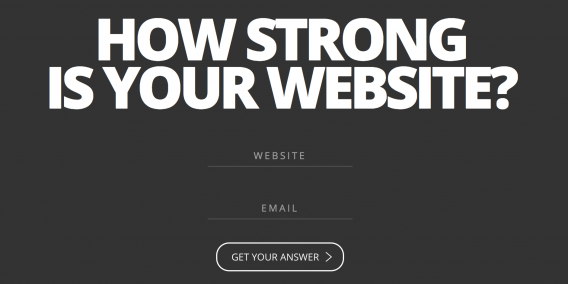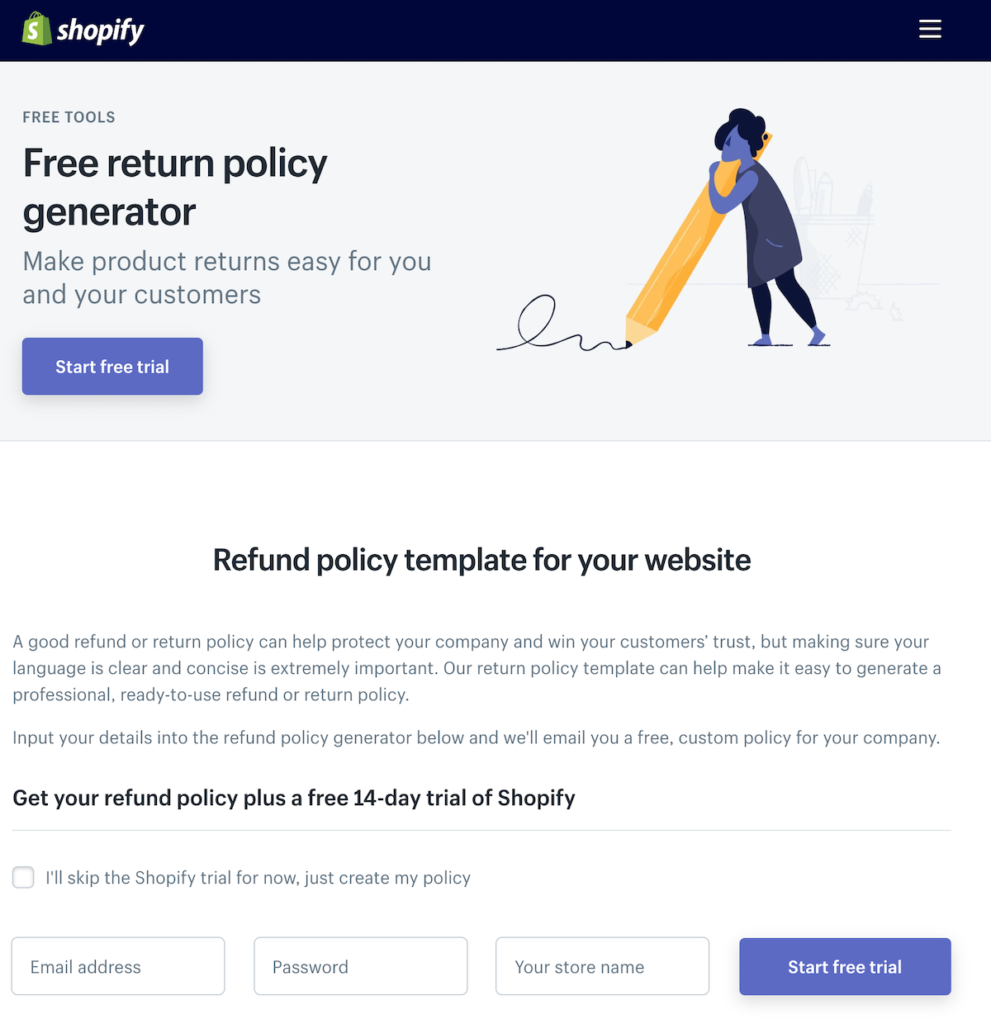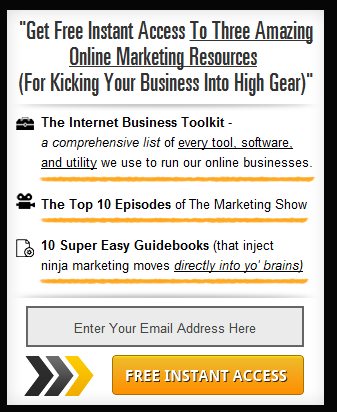More than 95% of your visitors won’t buy anything on their first visit. They’re either just browsing, still in the research phase, or not entirely sure your offer is what they need. It takes time to build trust, instill confidence, and build a relationship.
So if we know that the overwhelming majority won’t buy anything on their first visit, why push it? You’re just going to turn them away faster.
Instead, you should try to capture their email address and begin forming a relationship. Money is in the list, as they say… And they’re right!
Having an attractive lead magnet will accelerate your email list building like it’s on steroids.
If you’re currently getting five subscribers a day and you’re able to increase it to just eight a day, the difference in 30 days would be almost 100 new subscribers (150 vs. 240). If even small improvements like that can make a difference, imagine what a killer lead magnet can do for your list.
Table of contents
What is a lead magnet?
A lead magnet is a free offer you make to visitors, providing something of value while at the same time convincing them to give you their email addresses.
Getting their email is a transaction. You want their email, so you have to offer something they want in return. Your job is to sell the idea of subscribing to your list and you need an attractive lead magnet to do so.
If your lead magnet is something people want and it seems to be worth going through the hassle (typing the email address, worrying about spam, etc.), you will get their email.
The speed of your list building depends mostly on the value of your lead magnet:
- Lousy, unattractive lead magnet = very few sign-ups.
- Valuable, attractive lead magnet = tons of sign-ups.
Yes, the design, location, and usability of the email capture form all matter, but the lead magnet is what makes the biggest difference.
This is not a lead magnet:
Nothing magnetic about it. No reason whatsoever given for joining. Probably a good indicator that they don’t take email marketing seriously.
This is a lead magnet:
There’s a clear offer in place. It’s communicating the value the subscriber will receive. It has a somewhat spammy feel to it (a bit much hype), but all in all, it’s pretty good.
Naturally, you need to deliver on your promise of value. Under-delivering will result in useless emails. Money is not just in the list, but in the relationship with your list. You want to have an impressive start.
How to build an attractive lead magnet
Your goal is to come up with a magnet that makes visitors super excited.
Ask yourself: what’s the one thing that would be insanely useful to my audience? You could probably even charge money for it, but won’t.
The truth is that a lot of websites try to capture leads. Many have a lead magnet in place and most offer “free reports” or whitepapers. Mirroring what everyone else is doing is a terrible strategy—and you don’t want to sound like everyone else (“Get 10 tips to…”).
Be a rebel and a contrarian. See what your competitors are doing and do something different.
5-step checklist for an attractive lead magnet
Understanding what your ideal customer wants is essential and goes without saying. You want people to go through the lead magnet and learn something—gain something useful, experience an “aha” moment.
The bigger the positive impact of your lead magnet, the better push you have given the prospect.
Take your current lead magnet or the new idea that you have for one and check it against this list…
- Does it add as much value as possible? The better the offer, the more people will take it. A free car to every subscriber? That’d be a guaranteed 99% conversion rate. (Hey, there are always skeptics that won’t believe a good offer when they see one.) Try something less… Extravagant, but start with the best possible idea and downgrade from there, rather than thinking about one notch above “join to get free updates.”
- Does it evoke an emotional reaction? “For free, really!? I want that!” That’s the reaction you want them to have when they see your lead magnet. Emotional reaction is very important.
- Have you put in the necessary work? There are no shortcuts. The more effort you put in, the better the outcome. If you want to create a killer lead magnet, be ready to sweat.
- Are you setting false expectations or stretching the truth? Nothing is worse than broken promises. Fool me once, shame on me. And I won’t risk being shamed twice.
- Is this really the best possible idea? Look at the lead magnet idea you’ve got and ask yourself whether it’s possible to come up with an even better one. If yes, go back to the first question.
Building the best possible lead magnet takes time. It’s okay to start with something mediocre so you can capture at least some emails while you’re working on your killer lead magnet. You’ll only be losing the visitors that are coming in now if you have nothing while you’re creating.
Temporary solutions have the annoying ability to become permanent ones, though. Don’t settle for a mediocre lead magnet.
How to structure the lead magnet offer
Start with the hook: why this should be important to them. Craft a benefit-oriented headline.
- Promise: What they’ll get when they subscribe.
- Connect: Why you created this and for whom.
- Key points: Issues and solutions, could be in bullet points.
- Call to action: What they should do next.
Don’t ask them to fill in too many fields. In most cases, just email is enough. Read this post about the design of the form.
Your lead magnet as a segmentation tool
You don’t want the lead magnet to be attractive to everyone—just your ideal clients.
Sure, you could give free movie tickets to anyone who joins your list, but how many of them will want to buy your product? Lead quality is very important, and you only want to focus on your target group. Offer something that clearly leads to your product.
Make the lead magnet highly specific to your target clients. Try to come up with ways that it would turn off the rest. Being ultra-specific is the best way to capture a specific audience (e.g., “If you’re a left-handed single woman in Minnesota, you owe it to yourself to watch this.”)
Also, consider using multiple lead magnets at the top of your funnel to segment your list. For example, CXL might offer two different lead magnets: one for marketers who can test and one for marketers who can’t test. Or we might offer five different lead magnets based on topics we cover frequently: psychology and persuasion, copywriting, A/B testing, UX and design, and analytics.
The more specific your lead magnets, the more you know about the people on the lists, and the more targeted you can make the sales funnels.
20+ ideas for lead magnets (by industry)
People often ask me for ideas… What should someone use as a lead magnet? You can usually create pretty awesome stuff with the essentials and proven angles: root causes for clients problems along with solutions, useful findings and data, personal stories, and client case studies.
If you want more, here is a short list of suggestions for different industries, so you can get the idea and get the ball rolling. All of the listed items are what you’d give in exchange for an email address.
Experts / infoproducts lead magnet ideas
These are coaches, trainers, consultants, and everybody else who sells intellectual capital.
- Ebooks and whitepapers;
- Mini-courses via email;
- A video or video series;
- Audio recording, podcast;
- Free education in any format;
- Free course / webinar;
- Assessment, audit or test.
Ecommerce lead magnet ideas
Getting the very first purchase is the biggest challenge. This is especially true for smaller stores that the buyer has never heard of. If their first buying experience is positive, they’re much more likely to repeat.
- Free coupon;
- Free shipping;
- Free gift with the first order;
- Educational content on how to achieve or build stuff with what you sell;
- Guide to saving money when shopping for X;
- Membership (make prospects feel special, invite them into your VIP group that provides bonuses, advice, etc.);
- Educational material related to the need they will solve with your product.
Service businesses lead magnet ideas
Hair salons, vets, plumbers, mechanics, and others who trade parts and labor for money.
- Free coupons;
- Educational content for DIY projects;
- How to be a smart buyer of X;
- Things you need to know before buying Y;
- Free online tools (home decor planner, pet optimal nutrition calculator, car online custom tuning, etc.).
Software businesses lead magnet ideas
- Free trial;
- Freemium account;
- Demo;
- Get the user in and doing stuff, ask for the email to save (check out how Typeform is doing it).
5 killer lead magnet examples (with critiques)
Here are some great lead magnet examples to get your creative juices flowing:
1. Grow & Convert

Comments:
- Clear value proposition.
- Highly specific to a niche audience.
- Shows up at the top of the page after spending some time on the website (meaning only more engaged visitors will see it).
2. HubSpot Website Grader

Comments:
- People just love tests and assessments. This one grades your website performance (SEO, mobile, security) and tells you exactly what you should do next. Pretty irresistible.
3. The One Question

Comments:
- Highly specific, catering to a particular need.
- Again, people love tests.
Disclaimer: The site was mine, which is how I know it converted very well (~30%).
4. Timothy Sykes


Comments:
- Clear value proposition.
- Two-step process helps to qualify.
- Copy makes it seem as though Timothy is doing you the favor… He’s giving you the value.
- Strong proof with “Top Trader” badge.
5. Shopify

Comments:
- Doubles as a lead capture and free trial sales page.
- Entrepreneurs don’t want to write legalese themselves, so it’s a pretty irresistible offer.
- Clear value proposition.
How to test lead magnet ideas (before creating them)
I’ve covered this before in another post, but it’s very important to outline again.
The risk of immediately running with the first lead magnet idea you have is that you might end up putting in a lot of effort to develop content that no one wants. To avoid this possible waste, use this process.
Before you start, you need to think hard about your customers, their end goals, and how you can help them.
- Start brainstorming ideas on your own. There’s some evidence that group brainstorming results in fewer (and lower quality) ideas.
- Write the better ideas down and format them as headlines or value propositions (e.g., “21 ways to lose 10 pounds in two weeks,” “12 things that better leaders do differently”).
- Scrap the crappy ones, select the best 6–10 ideas. Write them down on a single sheet of paper.
- Survey your ideal customers (the more the better, statistical significance matters). Use face-to-face meetings or Google Forms. Turn to your existing or former customers. Ask them which option they are most interested in.
- Now you have some winners and you can actually create those lead magnets. Put them up on your site and split test them against each other. If no idea gets an overwhelmingly warm reception, go back to the drawing board.
Turning leads into customers
Most sites convert at less than 5%. This means that 95% (or more) are not buying your stuff on their first visit.
Selling is often about trust and relationship building. The process of relationship building is essential to getting the customer to: trust you and try out your product without the pressure of a tough sell.
In order for this to work, you need to send them something that adds value and helps them make a positive purchasing decision. Eventually you will ask for the sale.
When should you ask for the sale?
There is no one right answer.
The Internet is filled with claims that it takes seven touchpoints (e.g., emails) before they’re ready to buy. This originates from the late Corey Rudl, who said that he had to connect with a customer at least seven times via email before they were willing to purchase his online marketing courses.
That worked for him and his business, which doesn’t mean it will work for you and yours. Above all, make sure you’ve added value, proven your expertise, and influenced the purchasing decision in a positive way.
Consider product complexity and price
The more complex and/or expensive the product, the more time and information prospects need before they’re ready to commit. It’s all about risk.
If the product is a box of matches, it’s very easy to understand and very cheap. Low risk. People can make a decision immediately.
There is no simple formula to figure out the optimal sales cycle (you can hire a bunch of McKinsey consultants, if you like), you have to base it on observations and testing.
How to test the length of the sales cycle
An easy way to go about it is by split testing. Use the exact same offer to get them to opt-in, but add them to different lists (or use a different reference code or some other identifier).
Have a different drip email campaign (autoresponder sequence) in place for each, varying the messages and the time before you ask for the sale.
You should measure sales conversions within a time period to determine which one works better.










Thanks for sharing this! Greadt advice and well explained – I find it very helpful and will use it! :)
I wish you all the best!
Tom
Howdy Peep
Great post and I’ve been toying with the idea of “join our mailing list get X discount” etc and this post will spur me on to do some testing :-)
Just thought you might want to know that the Jonah Lehrer article you referenced is incorrect and has been proven so by many in the industry of creative problem solving. The research Lehrer cited did not prove that group brainstorming does not work. In actuality, its construct validity has been questioned. Of fact, other scholars have pointed out that Lehrer “cherry-picked” his data from Nemeth, et al’s study “The liberating role of conflict in group creativity: A study in two countries”.
Enjoyed the post very much, but wanted to correct you on that particular point since I am a scholar in creativity and creative problem solving methodology. Group Brainstorming does work, effectively if one follows Osborn’s formula.
Be well,
Lane Watson
Just signed up for your newsletter – the pop-up box in the lower right is what got me. Is that a plugin?
Yup. Qoate Scroll Triggered Box
Amazingly helpful article – this is what ‘epic content’ looks like
Hi Peep! Awesome blog! Do you know any free plugins that would enable me to implement a scroll triggered box?
Yes: http://wordpress.org/extend/plugins/dreamgrow-scroll-triggered-box/
Thanks a lot for this Peep, I’ve set up this plugin now on my site http://www.evaneverman.com
Do you know of anything similar for a non-WordPress site? I want to have a similar scroll-triggered box on a standard long-form sales letter landing page.
Evan
Any coder with some jQuery knowledge will be able to create it. Go to elance.
Your timing is perfect. We’re about to rebuild our site so this will be a great reference for me!
This is THE best article I’ve read on lead magnet creation. This is some good stuff. I love your blog dude!
Loved this article, I will put many of your points into use. Thank you!
Super helpful article. It wouldn’t have been nearly as good without the last examples and screenshots of each site. I know that takes a lot of time to do, it was worth it.
It’s still hard to think of good lead magnets…I guess I’ll get better as I test them out.
I have 4 main topics for my website
Should I create 4 different lead magnets for each topic group
Or just 1 lead magnet for the whole site ?
Hey Charles, why not test both strategies and see which works better for you?
My instinct says go with the more 1:1 approach that will help match user intent (going to a specific category) with a targeted offer (specific lead magnet) while they may take a little more time to produce, specific lead magnets will give you a MUCH clearer understanding of who your visitors are & what they want.
So if your creating all these specific lead magnets for each topic,
on the back end in Infusion Soft are they being added to a specific list with its own email series or just the main list
Peep, You Rock! I’m so gald I found you cause I see your way of thinking about lead magnets very similar to mine.
Peep – I’ve been following your work for the past 1.5 years. Not sure if this is my first time commenting or not, but once again, great work. There are only a handful of sources with reliably good content for me. You are one of them.
Thanks
Ian
Peep! I keep going back to this article for inspiration man so thank you! We just launched Marketing Market, think Themeforest for lead magnets. Check it out, we think it would make a great addition to this article!
http://www.marketingmarket.net
Thanks for all the kickass content man!
certainly like your web-site however you need to check the spelling on several of your
posts. Many of them are rife with spelling problems and
I in finding it very bothersome to inform the reality nevertheless I’ll surely come back again.
Thank you for a great post Peep! I’m currently writing an ultimate guide to affiliate marketing for my blog. I’ll be linking to this post.